As an Amazon Associate I earn from qualifying purchases.
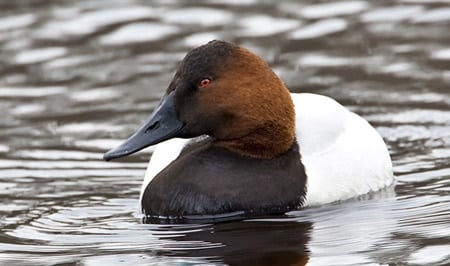
“Get ready, here they come!” My friend RJ hissed as two ducks came roaring in over our flooded rice field, right over our decoys.
I saw them just in time. Two big ducks, flying in fast, coming right to left. I was on the far right of the blind, so I waited until they were broadside to the blind. I focused on the trailing bird. “Now!” RJ shouted, and we let fly. I dropped the trailing bird, RJ’s friend Jim dropped the lead bird.
Riley the Dog leaped off the rice check into the water and soon returned with my bird, which I’d thought was a hen mallard. But as Riley swam closer, I saw the unmistakable aristocratic bill of a hen canvasback. “Canvasbacks!” I was beaming from ear to ear. Even though I shot my first specklebelly goose of the year, a mallard and two teal that day, it is the canvasback that lingers largest in my mind.
Canvasback. King of Ducks. Or in this case, Queen of Ducks.
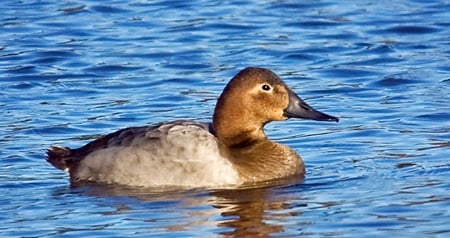
Aythya vallisneria, the canvasback duck. Where others dream about green-headed mallard drakes or morbidly obese pintails, I dream of King Can. It’s the historian in me.
No duck has risen to a higher plane at the table than the canvasback. George Washington prized it, as did the Robber Barons of the Gilded Age and the rough-hewn voyageurs of the Canadian frontier, who traded in beaver pelts and feasted on canvasbacks. It was, for a while, the most prestigious thing anyone could put on a menu.
That prestige was won at a terrible price. Pollution from the emerging Industrial Revolution and silt from an America increasingly yoked under the plow laid waste to the submerged gardens of wild celery, sago pondweed, wapato and wigeongrass that the ducks had once relied on. This weakened the cans, and their allure on the tables of the well-to-do sparked a hunting boom that drove the birds to the brink of extinction.
The canvasback became the poster child for the movement to ban market hunting in the early 1900s. But it was already too late. Never an overly abundant duck to begin with, there are still only about 700,000 canvasbacks in North America, compared to about 8.5 million mallards. We hunters have only been allowed to take one canvasback per day for decades, and in some cases — last year being one of them — the season on canvasbacks is closed altogether. Every canvasback we get is a trophy.
And while a mounted can is a beautiful thing, my trophies are at the table.
If you are not a hunter, you might think that all ducks are ducks. Nothing could be further from the truth. For starters, many of the ducks we hunt do not even share the same genus, let alone share the same species. A tiny teal is as different from a mallard as a quail is to a turkey. The canvasback, which can weigh in at 3 1/2 pounds for a big drake, is among North America’s largest wild ducks. So there is quite a bit of meat on one.
Secondly, every duck species has its own preferred diet. And, given its druthers, a canvasback loves nothing more than the roots of vallisneria, the wild celery. Oddly, it does not taste like celery and is not related to the garden plant. But its roots are soft, easily digestible by the ducks, and loaded with carbohydrates. Where vallisneria lives, you will find canvasbacks. If they can’t find that, canvasbacks switch to sagittaria, also known as wapato or duck potato. These are equally loaded with carbs, but they are harder to digest. One step down are sago and wigeongrass. Finally, if pushed, canvasbacks will get all Atkins Diet and switched to a diet almost exclusively of Baltic clams.
This is what cans eat when they are in San Francisco Bay, where a quarter of all canvasbacks spend their winters. But cans can’t live on clams alone (OK, maybe they can, but it makes for a good phrase.) So we will see them inland with some frequency, roaring over big water at the Delevan National Wildlife Refuge and, occasionally, in ricefields. That’s where RJ of North Wind Outfitters had invited me to hunt last week.
The hen canvasback I’d shot was pretty skinny. We’d had several days of tremendous north winds, which forces the ducks to expend far more energy than they normally would just to get from place to place. It’d be like you running everywhere you went for three days. You’d lose weight, too. We suspected that these cans were in the rice to carb up. And we were right. Her crop was full of rice, and her liver was so engorged with fat it was wild foie gras. An even rarer treat.
Diet determines flavor, but no matter what they eat, canvasbacks taste different from other ducks. Their meat is a rich crimson, their skin a pinkish buff, their fat a ghostly ivory. Earlier this fall I cooked some ducks for my friends Chris and his friend’s family while I was staying in North Dakota. They’d shot a mallard, a pintail and a canvasback. I decided to cook them all simply and not tell everyone which duck was which. Everyone agreed that the pintail was the mildest, the mallard was kinda boring, and the canvasback was the most interesting. It is “duckier” than most other species. Strong in a good way.
And our American tastebuds were more attuned to the intricacies of various meats a century ago.
A while back I wrote about how prized the now-lowly ruddy duck once was, and in flavor, a good ruddy is to a canvasback what a teal is to a pintail: Merely a smaller version of the larger, more fashionable duck. And no duck — indeed, no other animal save the terrapin or the abalone — has reached the heights of fashion of the canvasback.
Imagine the most expensive thing on a menu you can think of, excluding Cognac or rare wine. Caviar, right? A good serving of caviar at a nice restaurant might set you back $50 or more. Canvasback was once like that. A look at the century-old menus of such swanky establishments like the Waldorf Hotel in New York City shows that an order of canvasback duck would cost you $4.50 in 1907. Do a little math and that’s the equivalent of about $104 in today’s dollars. And that, most likely, is for half a duck. Wow.
Even at the market, a canvasback might cost $1.25, or the equivalent of about $32.50 in today’s dollars. Consider for a moment that the average worker in the United States earned 19 cents an hour and you realize that it would take nearly three days’ pay for that person to earn enough to order canvasback at a restaurant. King of Ducks indeed.
So how was that canvasback served at the Waldorf? As it happens, it seems that cans were such a precious item that they were served in only one way: Roasted rare, carved and served with a red currant sauce (or jelly) and a side of “fried hominy.” Always. I found nearly 40 recipes or mentions of canvasback being served, dating from 1877 to 1907 and they are all done the same way.
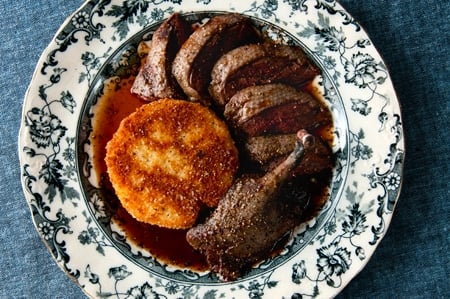
Clearly, I needed to recreate this recipe. First revelation: The “fried hominy” mentioned in all the old recipes is not what you think. It is not fried hominy at all, but rather cold, cooked hominy grits, cut into shapes, coated with egg and breadcrumbs and fried in lard.
Second revelation: They roasted their canvasbacks hot. I mean, HOT. Like get the oven as hot as it will go, keep it there for 20 minutes and hold on hot. None of this namby-pamby 425°F crap. Try 500°F, or even hotter. As for cooking time, every one of the old recipes had strong opinions on how long the duck should be in the oven. They ranged from 15 minutes to 30, and since I like my ducks pretty rare, I went for 18 minutes, with a 10-minute rest.
I’ve been making a sauce like the one they used for years. It is a variation of the classic Cumberland sauce, only with no flour. Frankly I like this one a little better.
The result: History on a plate. Everything went together in a harmony of rich and savory, acidic and sweet. The only thing it needed alongside was a bitter greens salad, which I will do next time I make this dish.
When that will be, I cannot say. It isn’t every day we get to bring home King Can.
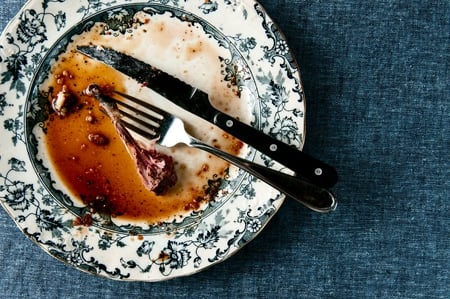

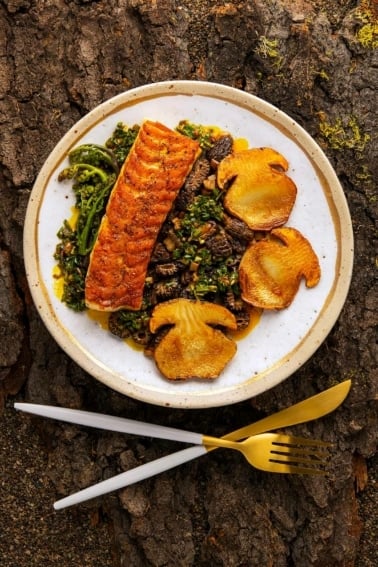
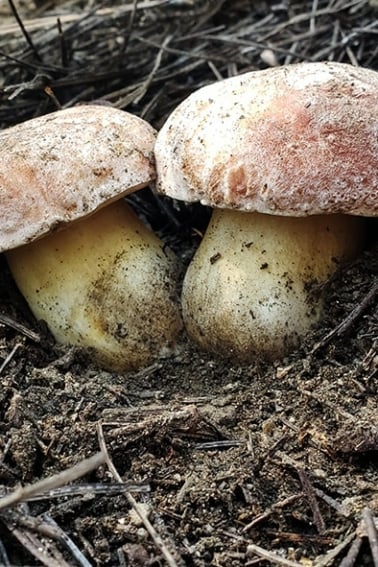
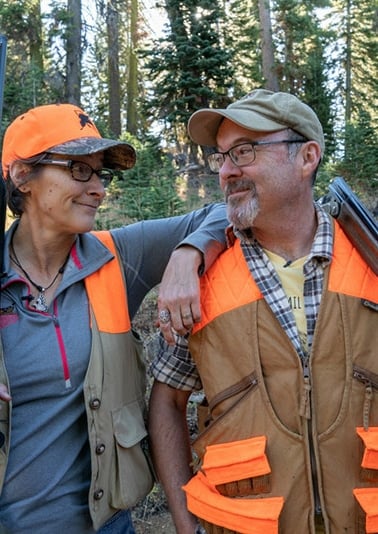
I enjoyed your article. I’ve hunted canvasbacks on Coos Bay, Oregon for years. They eat mainly small clams in the bay, but their flavor is excellent – the best. However, years ago (in the 60’s) I made a rule I still keep. I won’t shoot a hen canvasback – only drakes. Their breeding population needs all the help we can give it. Besides, hen canvasbacks are too trusting and too cute to shoot. By the way, I carve my hunting decoys out of red cedar. I presently have about 30 Cans, but my goal is at least 50. That would make a pretty nice spread.
Les Lanier
I’ve been fascinated by some of the really strange (or at least, different) things you see on menus from just 100 years ago. So different from our corporate-driven culture (sorry if that came off hipster-ish). Radishes and sardines instead of quesadillas and mozzarella sticks, frostfish instead of mahi mahi, and every manner of obscure wild bird in place of the ubiquitous chicken. For example wading birds with long legs. If we think of those it would never even cross our minds to wonder what they taste like. And who knew that apparently clams and oysters were such a given they were at the very top of just about every single menu. Anyway, kudos for the recreation!
Hank,
I have had the privelage to shoot many canvasbacks this year, and been lucky enough that a few friends don’t keep their birds very often so I have ample Cans in my freezer right now.
Last night my friend John prepared 4 Cans in the method you described above. 3 couples enjoyed them immensly. There was not much left when all was said and done.
I can see why the Canvasback has been described as “The Kind of Duck”. The meat was juicy and full of fat, gamey in flavor but nothing overwhelming. The sauce really tied the dish together, it paired perfectly with the rare duck and the polenta.
At any rate, thank you Hank for the time in writing this article and receipe for without it I would have never been able to enjoy something so magnificent and classic.
Dare Hank,
What a great article and tribute to this majestic bird. I believe I read once that these birds got their common name back in the market gunning days. The restaurants, and their patrons, preferred the flavor of these birds over all other fowl, so were in great demand, and commanded a higher price by the commercial hunters at the time. These birds were separated from the rest and placed in canvas bags for delivery to the local restaurants. The market gunners began having demand that exceeded supply of these transportable delivery sacks so started writing “CANVAS BACK” on these bags along with their name, and would pick these up when they made their next delivery. The name canvasback eventually caught on as a result.
A week ago I was lucky enough to harvest two bull cans over a long weekend hunt. These are the first cans I have taken in probably twenty years. I will honor these two birds, with your graciously provided recipe, on this year’s Thanksgiving dinner table. Thank You!
Chris: First, I thought they were mallards. Second, cans are not that easily ID’d, especially where there are redheads around. Third, there are more canvasbacks around now than in the last 50 years, so they are doing pretty well. I totally respect your decision to not shoot cans, but please respect my decision to shoot those few I do see every season; if I’m lucky I get maybe 4-5 a year.
Hank,
I hunted Cans over 40 years ago in the California Delta. Being the fastest flying of all the ducks, they seemed like a formantion of SR71’s roaring low over the deeks. With their distinctive sloped head and high speed flying they were easily identifiable. Many times they would slip by before you could get the shotgun to your shoulder, but they would usually swing around to give the deeks a second look. When that happens I would pick out the drake. Given their low numbers, I am just a little bummed that you shot the hen. In the last 25 years, I have made it a practice to let them pass by untouched and would just marvel at their winged grace.
Also,for that one special bird that seems to have the perfect plummage and would look great mounted, there is a way to extract the body for consumption and leave the rest in good order for a taxidermist. I have done it though it is a little hassle. A local taxidermist would be happy to demonstrate the procedure with the expectation of future business.
Mike: Nope, a quick brine — 4-8 hours — isn’t sacrilege. I don’t do it because I like the unbrined flavor of duck, but it won’t totally kill it. If your canvasback was shot over salt water, brine it. If not, I’d leave at least this one unbrined, so you can get the full flavor.
I just got my first two Canvasbacks this last week and am even more excited after this article to roast the drake whole. The hen i have already broken down and cooked the breast. What a great flavor. What do you think about a brine to season all the way through? Sacrilege? Anyway, love the article. Keep the waterfowl recipes coming. Mike.
Hank, I used to shoot on the South Bay from a open water rig with 6 to 10 dozen can dekes. I bagged a few… more than a few, actually. It was a great deal of work to launch. motor out, set up, anchor to get a chance at the cans. But it was always worth it. The king of ducks for sure.
For a treat, try a classic canvasback terrine en croute. For some years I did this every December for holiday consumption. As you say, the canvasback deserves the very best.
Merry Christmas.
We call those ‘grit cakes’ around here and they’re one of my favorites. At our home we’ll take leftoverbreakfast grits and pour them onto a cooking sheet, let them sit and cool, then cut and fry them for lunch.
I don’t know that I will ever have the chance to try a canvasback. Perhaps only if I’m lucky enough to be back home during duck season and my brother is lucky enough to shoot one. But aside from that, I LOVE that you revived a historical recipe and shared it. Simply fascinating. Thank you for such a thorough post about the duck and its history, recipe included.
We’re about eighty miles east of the canvasbacks’ known migration route (down the Hudson River), so I’ve only seen a few of them taken over the years. Despite the fairly low odds of success, I’ve had a friend carve of few cans that are now part of my broadbill rig. Maybe this will be the year I get lucky…fingers crossed, cause I’d sure love to try your recipe.
Like you, Hank, I like ducks rare – but not as rare as a lot of people back in the Cheapeake Bay region do. A friend from back there told me that when he was a kid and canvasback came on his grandfather’s table, the meat a quarter to a half inch under the crisp skin was still almost purple in color and jelly-like in cosistency. I wonderif it was even warm? But it was considered the best of the best, just as you say.
I wouldn’t doubt that I have shot my last can, but I hope not. Their wings often make a sound like ripping silk as they sweep by. Are they afer fast!
My neighbor is a big duck hunter, and I know he gets quite a few each season (not sure if Canvasbacks or not). Might have to hit him up for some just so I can try this recipe!
Kendra
Phillip: Maybe. It is such a drive that I’d need to spend the night somewhere closer to Mendota, but if we can fix that, I’m game.
Deana: I should have used it, but alas, the magic stuff is still staring at me on my desk. Maybe I will do another canvasback recipe (I have one more in the freezer) with it. The stuff is so precious I am scared to use it!
Well Hank, all I can say is WOW!
I first found you and your remarkable blog researching canvasbacks (and you were so generous with sharing your remarkable knowledge about game) and have been dying to try one ever since. They are legendary… like finding a unicorn next to your pond… and you did!
I keep meaning to put the word out to an East coast hunter (followed by a dinner invite of course) to share one… especially from down south a little way….. after a lunch on that wild celery.
I hope you used that ancient madeira with this baby…it deserved the best in that sauce! Thanks for sharing the remarkable experience.
Jake, thanks re the photos! I don’t know much about the plate, except that it cost $65 at an antique store. On the back, stamped in blue, is this:
LEIGHTON
Rd No 300714
Then there’s a stamp in the clay, not inked, that has a crown in it, but I can’t read the words. One of the most curious things about it is that around the edge, there are patterns you can see in relief, but there’s no print on them, and they don’t match the printed designs. I like that about it!
Great post, didn’t know that much about the canvasback before. Was curious about the ceramics you used in the photos (great photos), the design on the plates are great. Can you share some info regarding where you got them?
To be fair, doing inflation adjustments for older food prices are hard, because food used to take up a much larger share of a typical consumers income. So things usually look worse than they were. A canvasback was still probably at least the equivalent of a nice serving of filet mignon though!
Cans seem to show up at Mendota in pretty good numbers later in the season. It can make for tricky shooting in the foggy mornings, especially when the season on these great birds is closed and you’ve got scaup flying around too.
You up for a drive south in January?